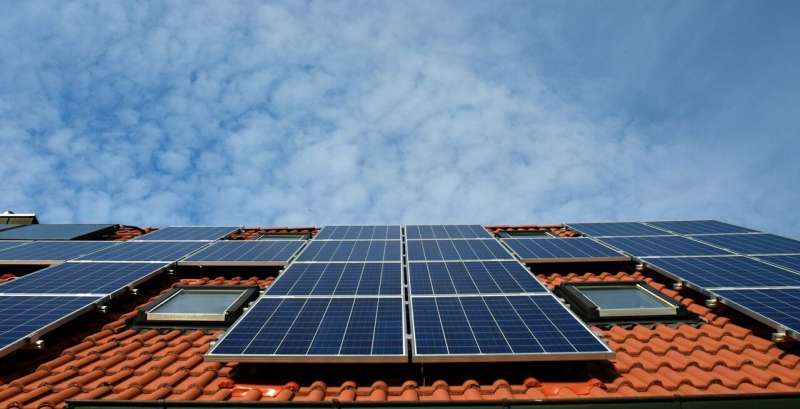A microwave technology invented at Macquarie University will improve the manufacture of solar cells and make them easier to recycle.
During the fabrication of solar panels, silicon goes through several high-temperature processes known as annealing. Currently the cells are cooked in an oven.
But in a paper published in the journal Applied Physics Letters this week, a team led by senior lecturer Dr. Binesh Puthen Veettil of the School of Engineering has shown that heating using microwave radiation is nearly as efficient. Plus, it saves considerable time and energy and has other advantages.
Because microwave radiation selectively heats silicon, it leads to almost instantaneous effects with massive savings of energy. This is partly because the rest of the laminated panel of glass, plastic and aluminum is left largely unaffected. And that property that has led to an unexpected recycling benefit for which the group has a patent pending.
Recycling benefits
Under microwave treatment, the plastic (ethylene vinyl acetate) coating that protects the silicon plate from moisture and contamination softens to the point where it can be peeled off mechanically. That means the plate can be easily delaminated and its components reused without employing harsh chemicals.
“Until now it made economic sense to just dump the panels in the landfill,” says Dr. Veettil. “In the rare instances when they are recycled, you crush the panels, heat them to about 1400°C and wash them with chemicals to remove the plastic—a highly energy-demanding process. But now, as the solar panels which began to be installed in vast numbers about 20–30 years ago are reaching the end of their life and being decommissioned, governments are demanding they be recycled.”
Selective annealing
Microwave annealing has several other advantages. The ability to focus microwave radiation means the heating it induces can be selective and highly tuned. Some of the newer panels, for instance, employ what is known as heterojunction technology, where crystalline and amorphous silicon are interleaved. In these cells, faster, better-directed annealing is highly advantageous.
Precise focusing also means that annealing can be directed to specific parts of the solar panel, making it ideal for annealing solar panels with more intricate internal structures fabricated for special purposes.
And, in contrast to an oven where all sorts of chemical substances are shed from the walls, microwave annealing takes place in a clean environment. “So there is less contamination,” says Dr. Veettil. “And the whole process can all be undertaken at room temperature.”
New materials
There are several other projects involving solar cells and sustainable energy underway at Macquarie. One of the co-authors of the annealing paper, Associate Professor Shujuan Huang, leads a group looking at microwave annealing in perovskite solar cells. Perovskites are a group of crystalline minerals with semiconductor properties that may, in future, be used for solar cells because they are flexible, lightweight and cheap to produce.
In this case, the microwave radiation produced more efficient solar cells as compared to conventional annealing methods, but the reason is not clear. The current work is being undertaken partly to answer that question.

